The Samsung 870 EVO is the latest entry into the company’s successful line of consumer SSDs. The EVO line has been a highly successful endeavor for the company, as the line finds the perfect balance between performance and price while offering Samsung’s pedigree in reliability. These mid-range consumer drives are designed for all kinds of use cases, from everyday use and gaming, to those looking for a decent upgrade in performance for PC and even just those looking for a reliable SATA SSD.
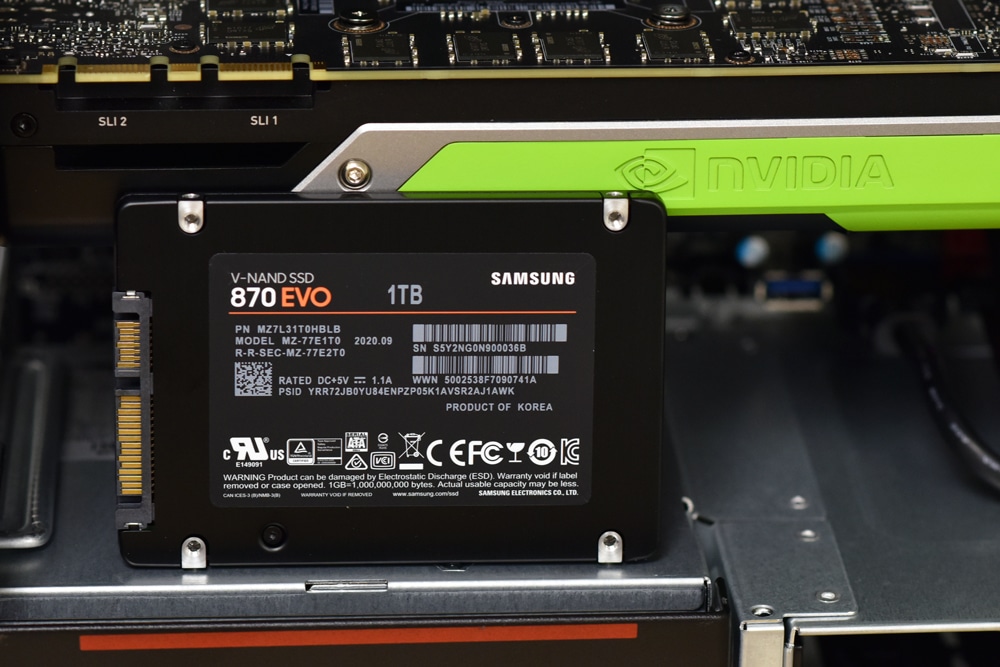
That said, it’s been a while since we’ve seen another EVO release (the last one being the 970 EVO Plus in the summer of 2019 and even longer since a 2.5-inch release), so we are certainly happy to get our hands on it. The 870 EVO uses TLC (or 3bit MLC, as dubbed by Samsung) 3D V-NAND, is available in capacities from 256GB up to 4TB, and features the company’s newest in-house controller. The 870 EVO also offers an endurance of up to 2,400TBW for the highest capacity model.
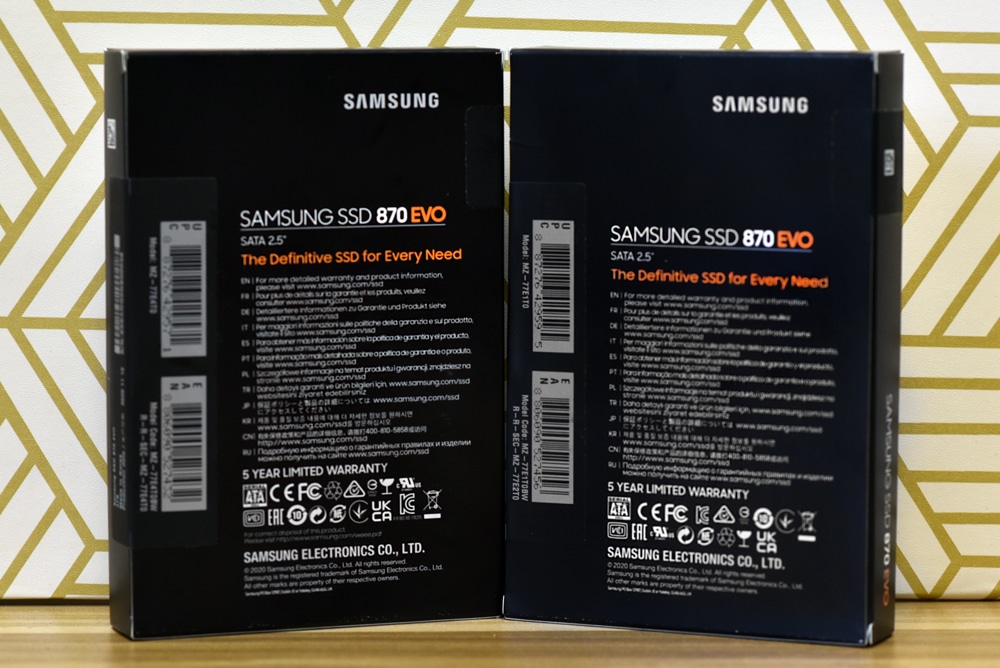
Performance-wise, the Samsung 870 EVO is quoted to deliver sequential read and write speeds of 560MB/s and 530MB/s, respectively, while random performance is expected to hit up to 98,000 IOPS read and 88,000 IOPS writes. This is only a slight upgrade in sequential read performance over the 550MB/s offered by the 860 EVO (which is expected, since the drive’s performance is capped by the SATA interface), with Samsung claiming a 38% increase in random read performance speeds. To help sustain these performance numbers, the EVO line leverages Intelligent TurboWrite technology.
Backed by the company’s usual 5-year warranty, the Samsung 870 EVO is available in capacities of 250GB ($39.99), 500GB ($69.99), 1TB ($129.99), 2TB ($249.99) and 4TB ($479.99). We will be looking at the 1TB and 4TB models for this review.
Samsung 870 EVO Specifications
| Interface | SATA 6Gbps |
| Form Factor | 2.5-inch |
| Storage Memory | Samsung V-NAND 3-bit MLC (TLC) |
| Controller | Samsung MKX Controller |
| DRAM |
|
| Capacity | 4TB, 2TB, 1TB, 500GB, 250GB |
| Sequential Read/Write Speed | Up to 560/530 MB/s |
| Random Read/Write Speed | Random Read 98K, Write 88K IOPS |
| Management Software | Samsung Magician |
| Total Bytes Written |
|
| Warranty | Five-year Limited Warranty |
Samsung 870 EVO Design and build
As expected, the Samsung EVO 870 didn’t mess with its design. It is identical to its previous iterations like the 860, featuring its timeless look-and-feel: a black enclosure with a light gray square on top of the drive under the Samsung branding. Most Samsung drives use this exact same enclosure, so it certainly saves the company money when mass-producing the drives.
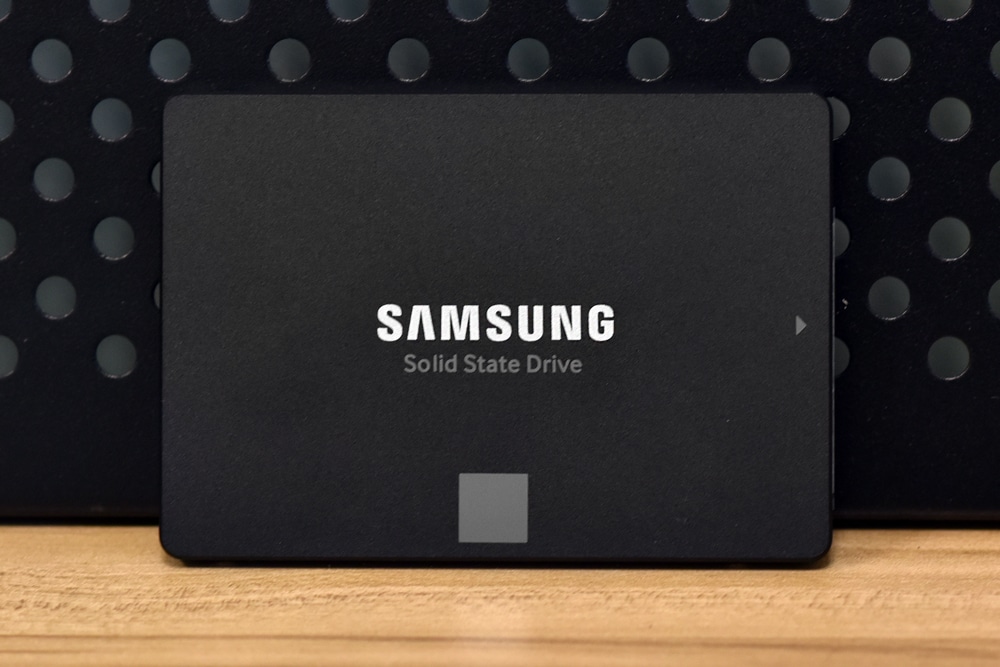
Turning the 870 EVO over to the backside reveals all the information you need located on the drive sticker, including the model and serial number, capacity, and certifications.
Under the hood, you can see the new Samsung MKX controller, Samsung NAND packs, and DRAM on the PCB.
Looking inside the cases, it’s interesting to see how small the drives have become. While the 2.5″ SATA case is a bit overkill for these drive innards, the compact nature of these next-generation drives is more towards how they get leveraged in small external devices. Not a lot is needed to hit the capacity requirements.
Samsung 870 EVO Performance
VDBench Workload Analysis
When it comes to benchmarking storage devices, application testing is best, and synthetic testing comes in second place. While not a perfect representation of actual workloads, synthetic tests do help to baseline storage devices with a repeatability factor that makes it easy to do apples-to-apples comparison between competing solutions. These workloads offer a range of different testing profiles ranging from “four corners” tests, common database transfer size tests, to trace captures from different VDI environments.
All of these tests leverage the common vdBench workload generator, with a scripting engine to automate and capture results over a large compute testing cluster. This allows us to repeat the same workloads across a wide range of storage devices, including flash arrays and individual storage devices. Our testing process for these benchmarks fills the entire drive surface with data, then partitions a drive section equal to 5% of the drive capacity to simulate how the drive might respond to application workloads. This is different than full entropy tests which use 100% of the drive and take them into steady state. As a result, these figures will reflect higher-sustained write speeds.
Profiles:
- 4K Random Read: 100% Read, 128 threads, 0-120% iorate
- 4K Random Write: 100% Write, 64 threads, 0-120% iorate
- 64K Sequential Read: 100% Read, 16 threads, 0-120% iorate
- 64K Sequential Write: 100% Write, 8 threads, 0-120% iorate
Comparables for this review:
First up is random 4K read, where the 1TB Samsung 870 EVO 74,587 IOPS at 1,715µs in latency, while the 4TB model had slightly better results with a peak of 75,310 IOPS at 1,695µs in latency. Their predecessor, the Samsung 860 EVO, wasn’t far behind.
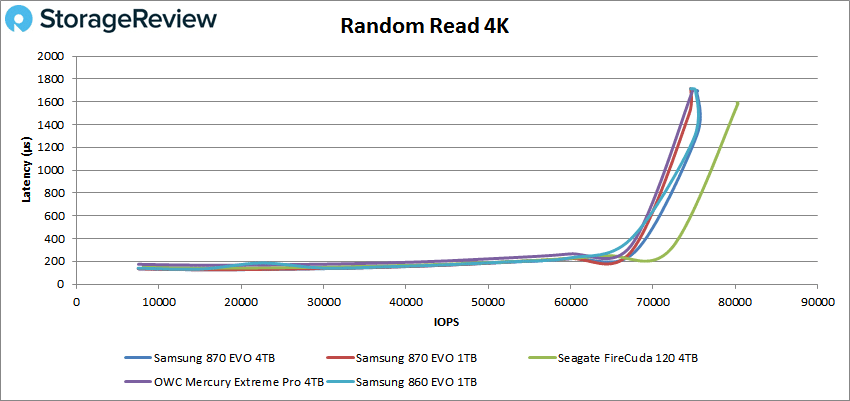
4K random write showed similar performance between all tested drives. Here, the 1TB Samsung 870 EVO peaked at 63,269 IOPS with 2,022µs, while the 4TB model showed a peak at 63,542 IOPS at 2,012µs.
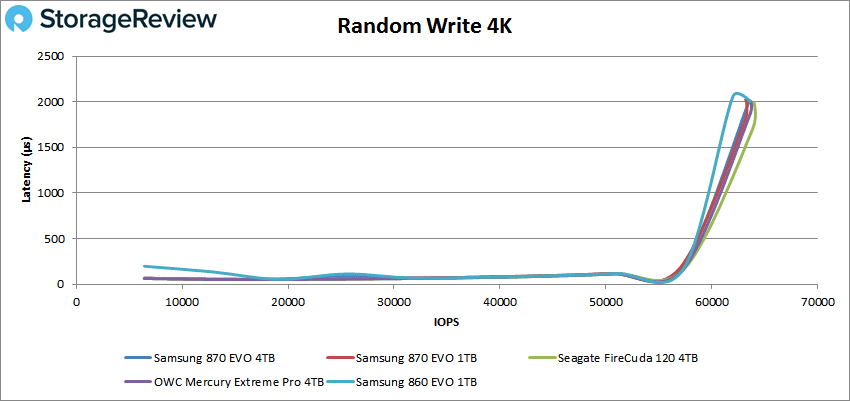
Switching over to sequential performance, the 1TB Samsung 870 EVO drive peaked at 7,705 IOPS or 480MB/s with a latency of 2,070µs in reads while the 4TB model hit 486MB/s and 2,043µs in reads for top spot.
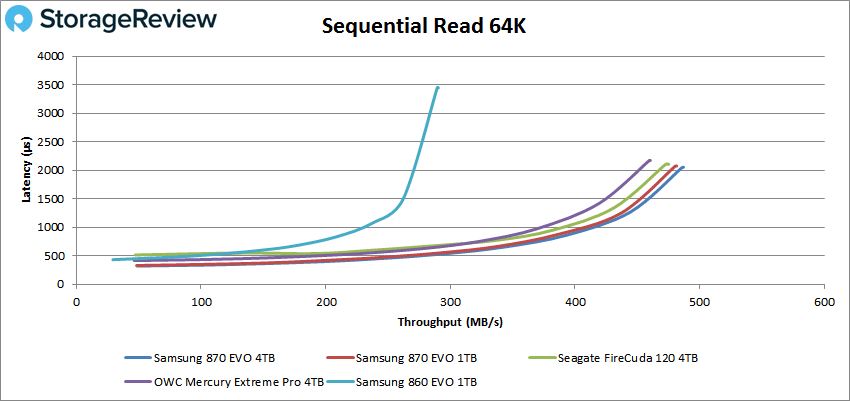
In 64K write, the 1TB Samsung 870 EVO peaked at 5,902 IOPS (or 369MB/s) with 2,692ms before taking a hit in performance at the very end. The 4TB model showed a peak at 6,680 IOPS (or 418MB/s) at 2,379ms. The Samsung 860 EVO showed performance right in between the two 870 EVO capacities.
Next, we looked at our VDI benchmarks, which are designed to tax the drives even further. These tests include Boot, Initial Login, and Monday Login. Looking at the Boot test, the 1TB Samsung 870 EVO peaked at 26,502 IOPS at a latency of 1,304ms while the 4TB model peaked at 27,582 IOPS at 1,234ms.
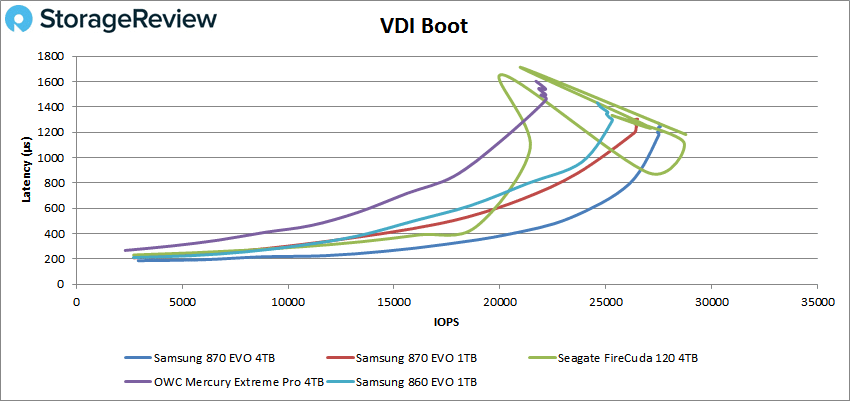
VDI Initial Login, the 1TB Samsung 870 EVO had a peak performance of 14,193 IOPS at a latency of 2,108ms while the 4TB model hit a peak of 17,021 IOPS at 1,755ms before taking a pretty big dip in performance at the very end (though easily taking first place among the tested drives).
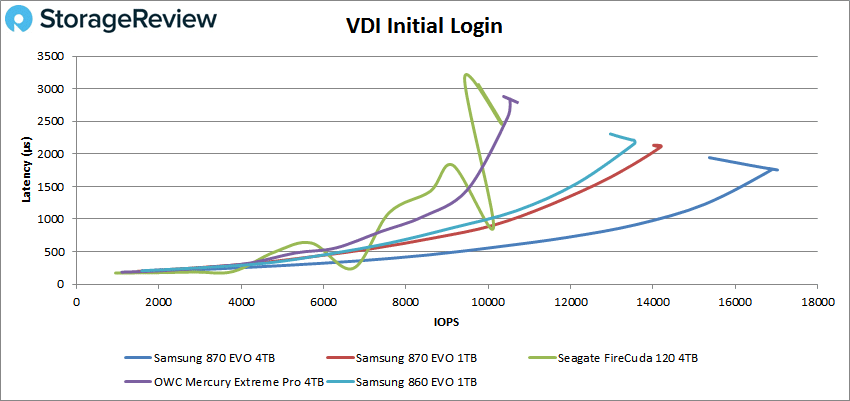
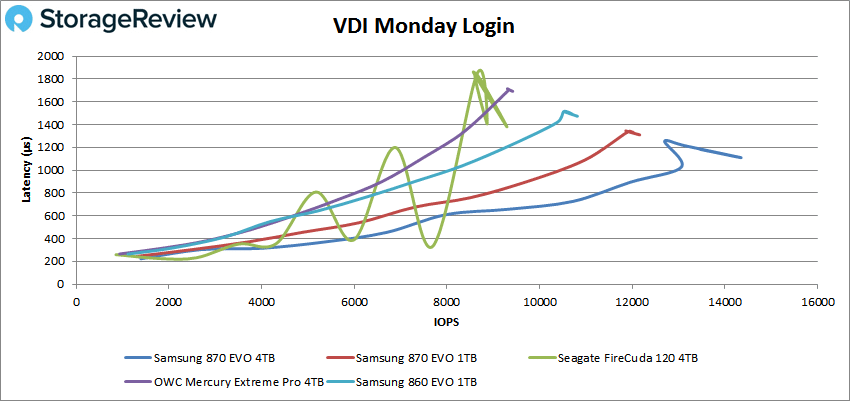
Conclusion
It has been quite some time, but Samsung has finally released the next iteration of the company’s highly popular 2.5-inch SATA SSD line, the Samsung 870 EVO. This drive leverages Samsung’s 3D V-NAND, features the company’s newest MKX controller, and is available in the same capacity points as the last-gen model (250GB to 4TB). Samsung states that the new 870 EVO boasts sequential read and write speeds up to 560MB/s and 530MB/s, respectively, while random performance is expected to hit up to 98,000 IOPS read and 88,000 IOPS writes, though it didn’t quite reach those levels in our tests.
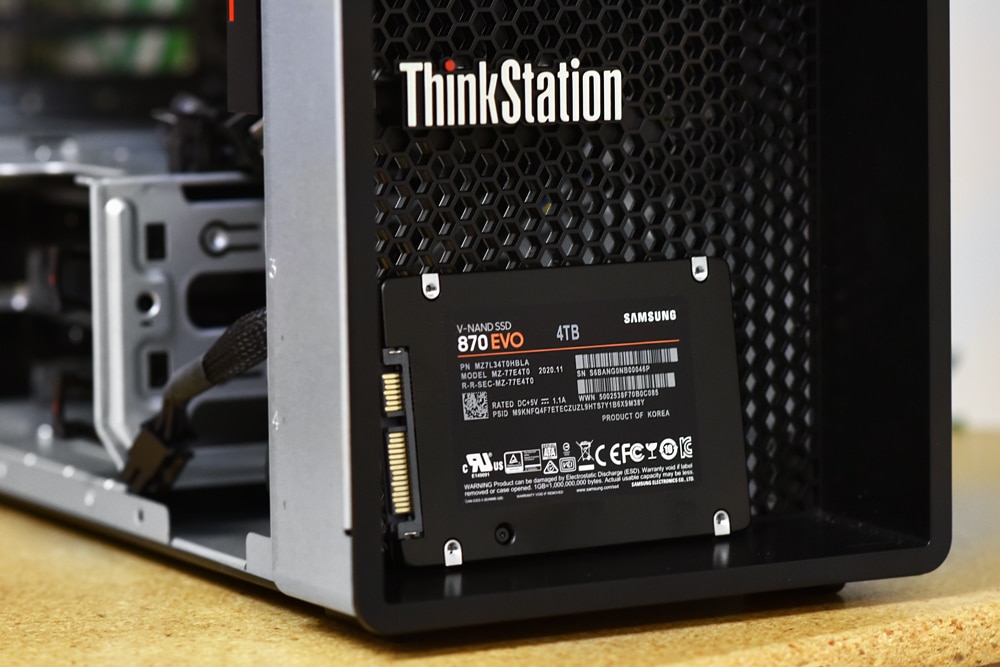
On paper, the 870 EVO seemed like a modest refresh of the last-gen model; however, results from our benchmarks told a slightly different story. For performance, we looked at both the 1TB and 4TB models and compared them to three other consumer-grade 2.5-inch SATA SSDs: the OWC Mercury Extreme Pro, Seagate FireCuda 120, and its predecessor, the 860 EVO.
For 4K random read and write, we saw both Samsung capacities hit around 75K IOPS and 63K IOPS, respectively, while the other tested drives showed very similar performance. Moving on to 64K read, the Samsung 870 EVO capacities saw 480MB/s for the 1TB and 487MB/s for the 4TB (much better than the 860’s 290MB/s) while 64K write we saw 369MB/s and 418MB/s, respectively. Though the 860 had better performance than the 1TB 870 EVO in sequential writes, the 4TB model showed a noticeable step up in speed.
When looking at our VDI benchmarks results, both capacities demonstrated a significant improvement over the last-gen EVO drive. In boot, the 1TB 870 EVO peaked at 26,502 IOPS and the 4TB model peaked at 27,582 IOPS, while initial Login had the 1TB with a peak performance of 14,193 IOPS and 17,021 IOPS for the 4TB model. Lastly, for Monday Login, 1TB Samsung 870 EVO had a peak performance of 12,161 IOPS and 14,323 IOPS for the 1TB and 4TB models, respectively.
Not only that, Samsung has essentially halved the cost of the launch price tags (and in some capacities, even more so) compared to the last gen release, as they go for roughly only $40 (250GB), $70 (500GB), $130 (1TB), $250 (2TB) and $480 (4TB). The 860 EVO had launch price tags of $95, $170, $330, $650, and $1,400 for the 250GB, 500GB, 1TB, 2TB, and 4TB respectively.
The problem though is SATA SSDs are aging technology, new systems are all pretty much NVMe at this point. Further, QLC NVMe SSDs make the cost metrics closer than most people think. And from a performance standpoint, the SATA story gets very sad when compared to NVMe, which has an order of magnitude performance lead over SATA. Even the worst NVMe SSDs will blow the best SATA drives out of the water. All that said, there’s still a market for SATA SSDs. Samsung’s newest EVO release benefits a good deal from the vertical integration that Samsung has offered for years now, paired with a five-year warranty. Overall, we’d encourage most buyers to go NVMe, but the Samsung 870 EVO is a good release by the company, and a worthy successor to the 860.


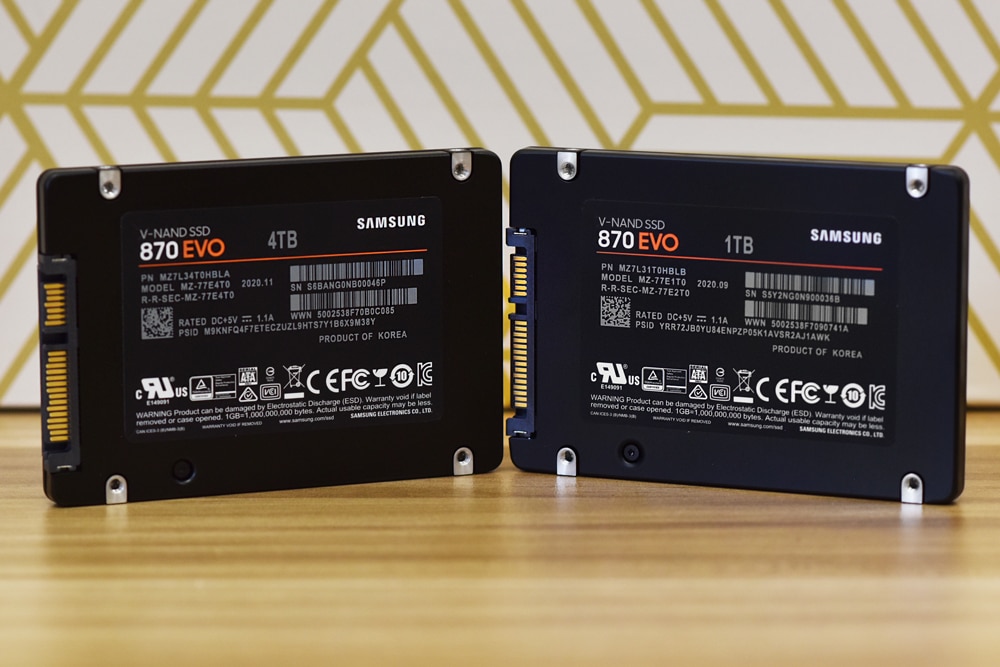
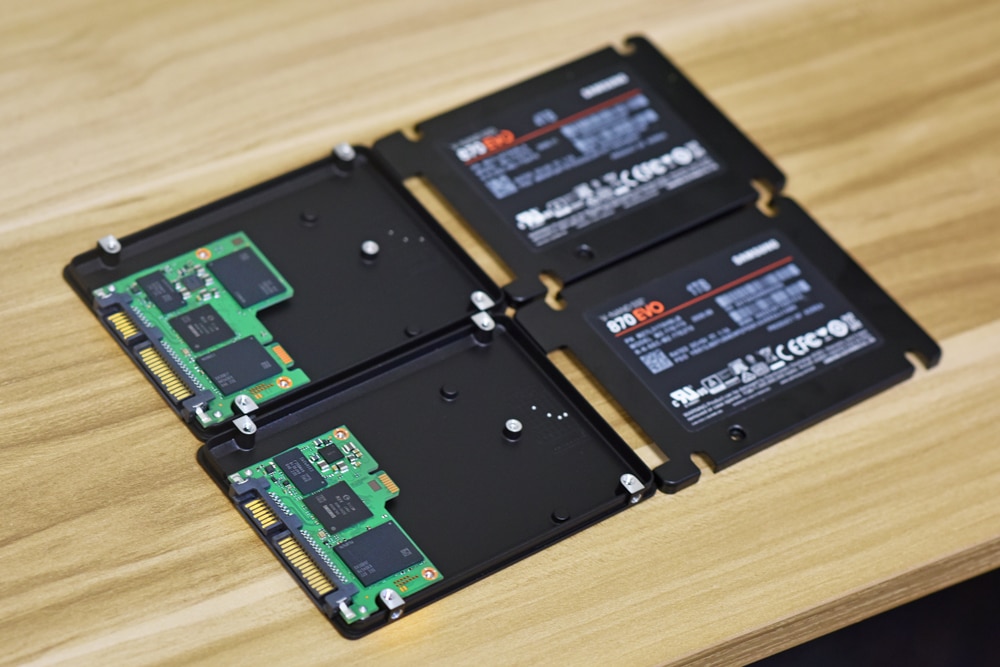
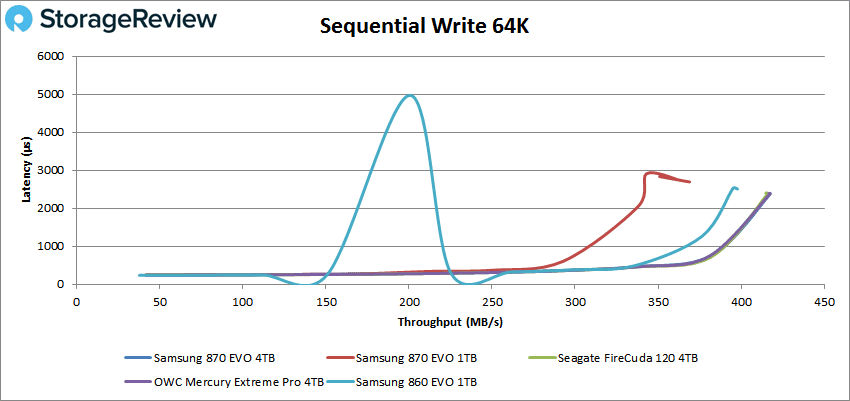


 Amazon
Amazon